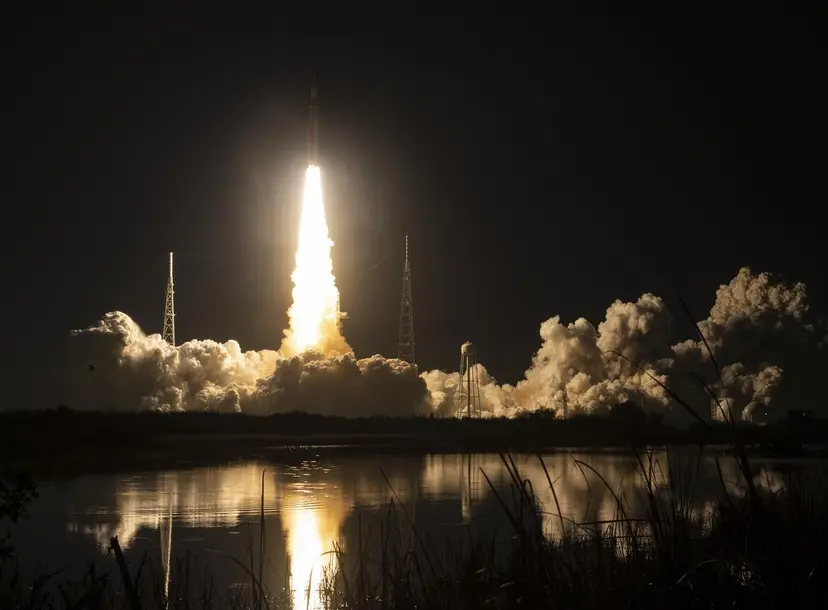The artefact – a ‘Mission Patch’ flown on an Artemis I mission in late 2022 – will now be added to the Ri’s internationally significant collection of scientific apparatus, notebooks and ephemera, much of which is on public display in the Ri’s free museum.
Mission patches are emblems designed and worn by astronauts and people affiliated with a specific mission, with the one gifted to the Ri being unique to Artemis I. It was flown to test Orion, SLS and the Artemis mission’s ground system, from launch through flight around the Moon and re-entry, recovering the spacecraft at the end.
As the first Artemis mission, the flight represented the earliest stages of NASA’s plans for a human lunar return.
Director of the Royal Institution, Katherin Mathieson, said: “We have welcomed many scientists from NASA to the Ri in recent years, to reveal their ground-breaking science to a public audience, so we are delighted to receive such a wonderful gift.
“Fitting so well with our history here at the Ri and with other artefacts in our collection, the Artemis I Mission Patch represents our continuous traditions of discovery and engagement. I look forward to seeing it on public display in our museum, through which we preserve important items for future study and engagement, and to support wider and deeper public access to science.
The patch was received by the Ri’s Chair of Trustees, Sir Richard Catlow, and Head of Heritage and Collections, Charlotte New, in a special ceremony held during a two-day conference being hosted at the Ri by the UK Space Agency.
Dr Paul Bate, Chief Executive of the UK Space Agency, said: "The Royal Institution’s rich history makes it the perfect place for the UK to host NASA’s Moon to Mars Architecture Workshop, bringing together valuable international contributions on deep space exploration and the benefits we can bring back to Earth.
“This workshop is a fantastic opportunity to engage with partners from around the world on the ‘how’ of deep space exploration and to help shape NASA’s approach to human space exploration. Our thanks go to the Royal Institution for providing such an inspirational setting.”
The Ri has strong connections to space exploration, stretching back to the 19th Century, including development of the electric motor by Michael Faraday in 1821 and the generator in 1831, as well as James Dewar’s invention of the vacuum flask in 1892 which made the liquification of gases possible.
The Artemis I Mission Patch will be preserved in the Ri collection along with the first-ever detailed photographs of the Moon captured by Warren De La Rue in 1850s; a section of meteorite from Tolucca in Mexico, discovered in 1776 and gifted to the Ri in 1803; and a replica of the towel delivered to UK Astronaut Tim Peake on board the International Space Station as part of the 2016 CHRISTMAS LECTURES from the Royal Institution.
Plans are now underway to display the Artemis I Mission Patch in the Ri’s free museum in central London.
